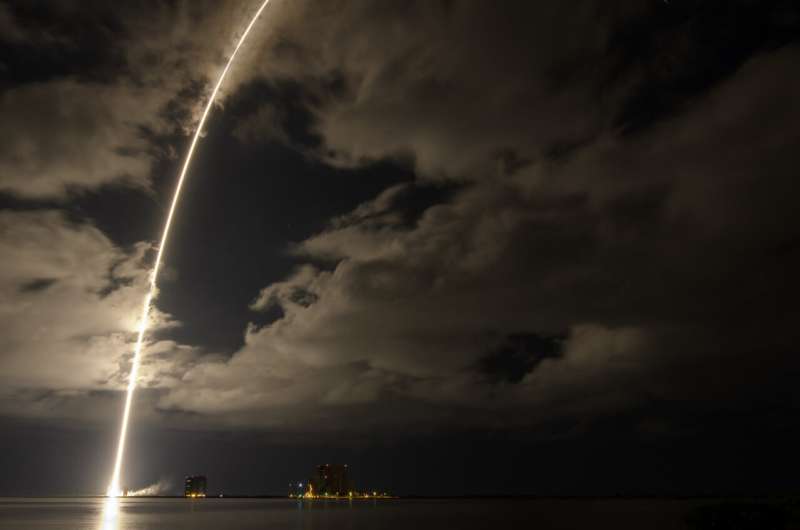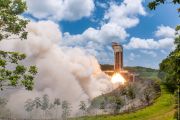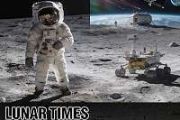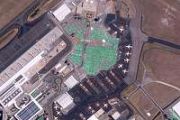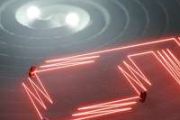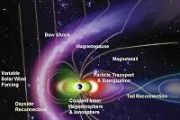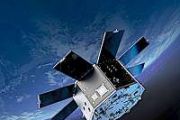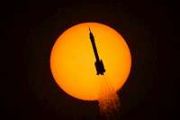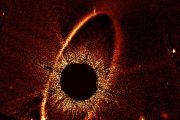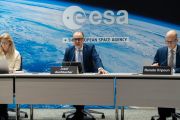
Copernical Team
Dwarf planet Vesta a window to the early solar system
 The dwarf planet Vesta is helping scientists better understand the earliest era in the formation of our solar system. Two recent papers involving scientists from the University of California, Davis, use data from meteorites derived from Vesta to resolve the "missing mantle problem" and push back our knowledge of the solar system to just a couple of million years after it began to form. The paper
The dwarf planet Vesta is helping scientists better understand the earliest era in the formation of our solar system. Two recent papers involving scientists from the University of California, Davis, use data from meteorites derived from Vesta to resolve the "missing mantle problem" and push back our knowledge of the solar system to just a couple of million years after it began to form. The paper Using the Moon to address digital inequality
 Most Americans take access to reliable, fast wireless internet (Wi-Fi) for granted. Yet, in underserved communities, reliable internet access can be as elusive as it is on the Moon. NASA is working to solve both challenges.
Digital inequality or inadequate internet access is a socioeconomic concern across the United States, and the pandemic has worsened the divide. In Cleveland, home of NA
Most Americans take access to reliable, fast wireless internet (Wi-Fi) for granted. Yet, in underserved communities, reliable internet access can be as elusive as it is on the Moon. NASA is working to solve both challenges.
Digital inequality or inadequate internet access is a socioeconomic concern across the United States, and the pandemic has worsened the divide. In Cleveland, home of NA Research to boost astronaut health for future space missions
 New research backed by the UK Space Agency will look to solve challenges such as muscle loss and isolation stress that astronauts face during long missions
The research, which uses the low gravity (microgravity) environment of the International Space Station and other facilities that provide similar conditions to space, could also potentially benefit people who suffer from conditions such
New research backed by the UK Space Agency will look to solve challenges such as muscle loss and isolation stress that astronauts face during long missions
The research, which uses the low gravity (microgravity) environment of the International Space Station and other facilities that provide similar conditions to space, could also potentially benefit people who suffer from conditions such AAC Clyde Space to supply core avionics to Arctic weather satellite
 AAC Clyde Space, a leading New space company, has been selected by OHB Sweden to deliver core avionics worth approx. 797 kEUR (approx. 8.2 MSEK) to ESA's Arctic Weather Satellite. The order has been preceded by a tightening of the original requirements of the systems.
OHB Sweden is the mission prime contractor for the Arctic Weather Satellite, providing the satellite platform and system in
AAC Clyde Space, a leading New space company, has been selected by OHB Sweden to deliver core avionics worth approx. 797 kEUR (approx. 8.2 MSEK) to ESA's Arctic Weather Satellite. The order has been preceded by a tightening of the original requirements of the systems.
OHB Sweden is the mission prime contractor for the Arctic Weather Satellite, providing the satellite platform and system in New US military branch gets its own intelligence wing
 The wing itself is an interim organisation, which will eventually be transformed into the National Space Intelligence Center, taking over part of the activities which at present are carried out by the National Air and Space Intelligence Center.
US Space Force has established its own intelligence group, called Space Force Intelligence Activity (SFIA), which will be based at the Wright-Patte
The wing itself is an interim organisation, which will eventually be transformed into the National Space Intelligence Center, taking over part of the activities which at present are carried out by the National Air and Space Intelligence Center.
US Space Force has established its own intelligence group, called Space Force Intelligence Activity (SFIA), which will be based at the Wright-Patte China's space station worth ever Yuan
 The three Chinese astronauts who are now on board Tianhe, the core module of Tiangong space station, will work and live there for about six months. This is the longest mission so far for Chinese astronauts.
The progress of China's manned space endeavors is evident. Eighteen years after sending its first astronaut into space, the country is building its own space station as a platform for h
The three Chinese astronauts who are now on board Tianhe, the core module of Tiangong space station, will work and live there for about six months. This is the longest mission so far for Chinese astronauts.
The progress of China's manned space endeavors is evident. Eighteen years after sending its first astronaut into space, the country is building its own space station as a platform for h Russians return to Earth after filming first movie in space
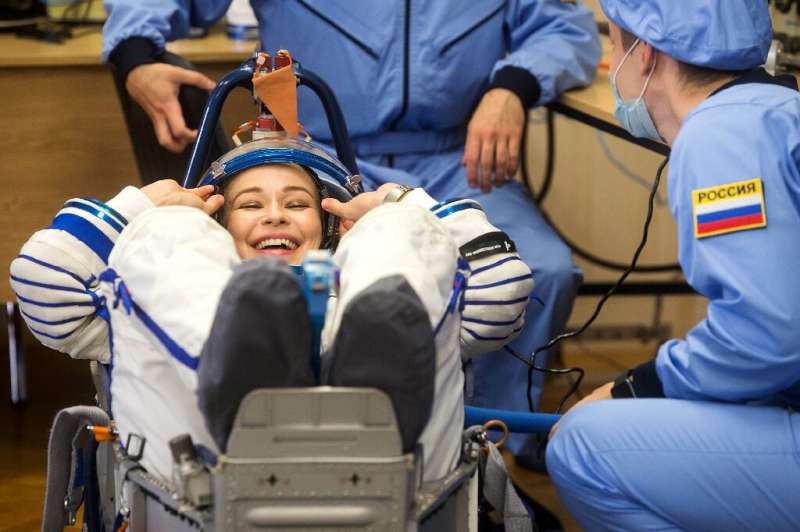
A Russian actress and a film director returned to Earth Sunday after spending 12 days on the International Space Station (ISS) shooting scenes for the first movie in orbit.
Yulia Peresild and Klim Shipenko landed as scheduled on Kazakhstan's steppe at 0436 GMT, according to footage broadcast live by the Russian space agency.
They were ferried back to terra firma by cosmonaut Oleg Novitsky, who had been on the space station for the past six months.
"The descent vehicle of the crewed spacecraft Soyuz MS-18 is standing upright and is secure. The crew are feeling good!" Russian space agency Roscosmos tweeted.
The filmmakers had blasted off from the Russia-leased Baikonur Cosmodrome in ex-Soviet Kazakhstan earlier this month, travelling to the ISS with veteran cosmonaut Anton Shkaplerov to film scenes for "The Challenge".
Russian crew return to Earth after filming first movie in space

A Russian actress and a film director returned to Earth Sunday after spending 12 days on the International Space Station (ISS) shooting scenes for the first movie in orbit.
Yulia Peresild and Klim Shipenko landed as scheduled on Kazakhstan's steppe at 0436 GMT, according to footage broadcast live by the Russian space agency.
They were ferried back to terra firma by cosmonaut Oleg Novitsky, who had been on the space station for the past six months.
"The descent vehicle of the crewed spacecraft Soyuz MS-18 is standing upright and is secure. The crew are feeling good!" Russian space agency Roscosmos tweeted.
The filmmakers had blasted off from the Russia-leased Baikonur Cosmodrome in ex-Soviet Kazakhstan earlier this month, travelling to the ISS with veteran cosmonaut Anton Shkaplerov to film scenes for "The Challenge".
New crew docks at China's first permanent space station
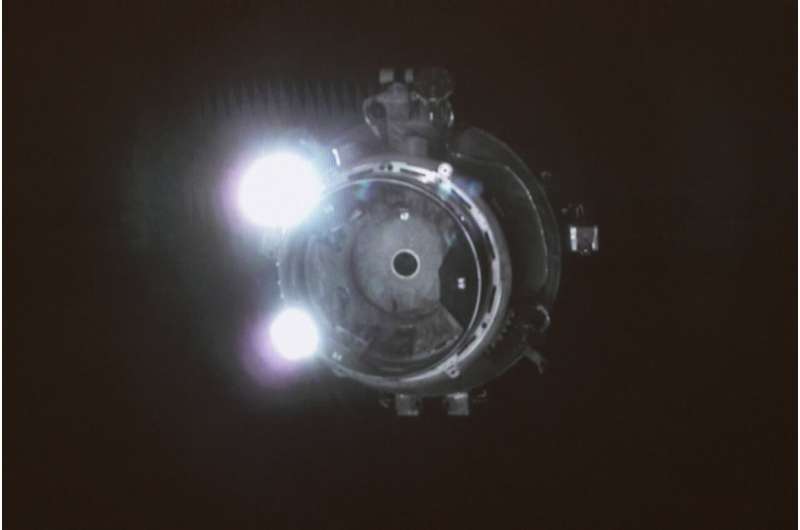
NASA's asteroid hunter Lucy soars into sky with diamonds
